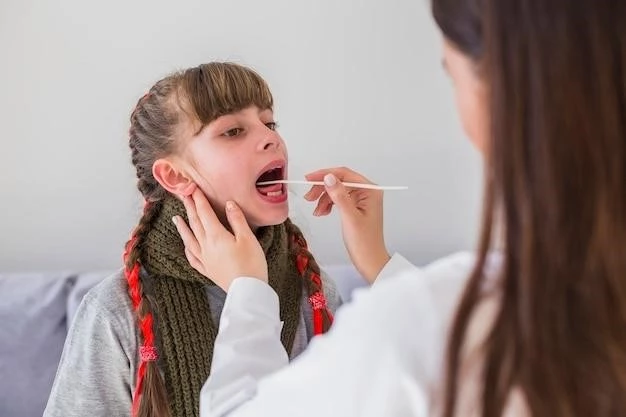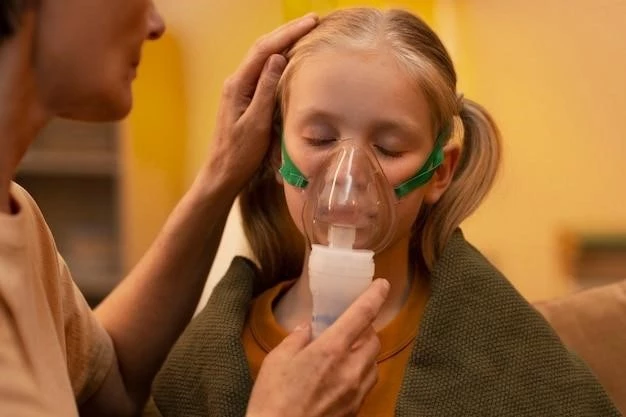Fronto-Facio-Nasal Dysplasia
Fronto-facial dysplasia is a complex condition characterized by craniofacial anomalies such as midface hypoplasia‚ orbital hypertelorism‚ and nasal bridge issues․ Understanding the various facial malformations associated with this condition is crucial․
Introduction to Fronto-Facio-Nasal Dysplasia
Fronto-facial dysplasia‚ also known as fronto-facio-nasal dysplasia‚ is a rare genetic disorder that affects the development of the face and skull․ This condition is characterized by a range of craniofacial anomalies‚ including midface hypoplasia‚ orbital hypertelorism‚ nasal bridge issues‚ mandibular prognathism‚ maxillary hypoplasia‚ cleft lip‚ and palate anomalies․
Individuals with fronto-facio-nasal dysplasia may present with varying degrees of facial malformations‚ which can impact their physical appearance and potentially affect their ability to breathe‚ eat‚ and speak․ The complex nature of these facial abnormalities requires a multidisciplinary approach for diagnosis and management․
Understanding the genetic basis of fronto-facio-nasal dysplasia is essential for accurate diagnosis and appropriate treatment planning․ Genetic counseling plays a crucial role in providing information and support to affected individuals and their families․ Early identification of this condition allows for timely intervention and management of associated complications․
As research continues to advance in the field of craniofacial anomalies‚ new insights into the underlying mechanisms of fronto-facio-nasal dysplasia may lead to innovative treatment options and improved outcomes for individuals affected by this condition․ By raising awareness and promoting collaboration among healthcare professionals‚ researchers‚ and patient advocacy groups‚ we can work towards enhancing the quality of care and support available for individuals living with fronto-facio-nasal dysplasia․
Understanding Facial Malformations in Fronto-Facio-Nasal Dysplasia
Facial malformations in fronto-facio-nasal dysplasia encompass a spectrum of anomalies that impact the structure and function of the face․ These malformations may include midface hypoplasia‚ orbital hypertelorism‚ nasal bridge issues‚ mandibular prognathism‚ maxillary hypoplasia‚ cleft lip‚ and palate anomalies․
Midface hypoplasia refers to underdevelopment of the middle portion of the face‚ leading to a flattened appearance․ Orbital hypertelorism is characterized by an increased distance between the eyes‚ which can affect vision and facial symmetry․ Nasal bridge abnormalities can result in a broad or flat nasal bridge‚ altering the overall facial profile․
Mandibular prognathism involves the lower jaw protruding forward‚ impacting bite alignment and facial aesthetics․ Maxillary hypoplasia‚ on the other hand‚ refers to underdevelopment of the upper jaw‚ which can contribute to dental issues and speech difficulties․ Cleft lip and palate anomalies involve a gap in the upper lip and/or roof of the mouth‚ requiring surgical correction․
Understanding the specific facial malformations present in fronto-facio-nasal dysplasia is essential for accurate diagnosis and individualized treatment planning․ A comprehensive evaluation by a team of specialists‚ including geneticists‚ craniofacial surgeons‚ orthodontists‚ and speech therapists‚ is crucial for addressing the complex needs of individuals with this condition․
By gaining a deeper understanding of the facial malformations associated with fronto-facio-nasal dysplasia‚ healthcare providers can offer tailored interventions to improve both the physical and psychosocial well-being of affected individuals․ Continued research and collaboration in the field of craniofacial anomalies are key to advancing our knowledge and enhancing the care provided to patients with fronto-facio-nasal dysplasia․
Mandibular Prognathism and Maxillary Hypoplasia in Fronto-Facio-Nasal Dysplasia
Mandibular prognathism‚ characterized by the lower jaw protruding forward‚ and maxillary hypoplasia‚ where the upper jaw is underdeveloped‚ are common features of fronto-facio-nasal dysplasia․ These craniofacial anomalies can impact facial aesthetics‚ dental alignment‚ and overall function․
The presence of mandibular prognathism in individuals with fronto-facio-nasal dysplasia may lead to challenges in chewing‚ speech articulation‚ and facial symmetry․ Orthodontic interventions‚ orthognathic surgery‚ or a combination of both may be recommended to address the malocclusion and improve facial harmony․
Maxillary hypoplasia‚ on the other hand‚ can contribute to dental crowding‚ airway obstruction‚ and speech issues․ Orthodontic treatment‚ surgical expansion of the maxilla‚ or a combination of orthodontics and surgery may be considered to address the skeletal deficiency and optimize oral function․
A collaborative approach involving craniofacial surgeons‚ orthodontists‚ speech therapists‚ and other specialists is essential for creating a comprehensive treatment plan tailored to the unique needs of each individual with fronto-facio-nasal dysplasia․ Regular follow-up and monitoring are crucial to track progress and address any ongoing concerns․
By addressing mandibular prognathism and maxillary hypoplasia early on and providing timely interventions‚ healthcare providers can improve the quality of life for individuals with fronto-facio-nasal dysplasia․ Patient education‚ support‚ and multidisciplinary care are key components in the management of these craniofacial anomalies‚ aiming to enhance both functional outcomes and aesthetic results․
Diagnosis and Treatment Options for Fronto-Facio-Nasal Dysplasia
Diagnosing fronto-facio-nasal dysplasia involves a comprehensive evaluation‚ including clinical assessment‚ imaging studies‚ and genetic testing․ A team of specialists may collaborate to confirm the diagnosis and develop a personalized treatment plan tailored to the individual’s needs․
Imaging modalities such as CT scans and MRI can provide detailed insights into the craniofacial structures affected by fronto-facio-nasal dysplasia․ Genetic testing plays a crucial role in identifying specific gene mutations associated with the condition‚ aiding in accurate diagnosis and facilitating genetic counseling․
Treatment options for fronto-facio-nasal dysplasia vary based on the severity of craniofacial anomalies present․ Surgical interventions‚ such as craniofacial reconstruction‚ orthognathic surgery‚ cleft lip‚ and palate repair‚ may be recommended to address the structural abnormalities and improve function․
Non-surgical approaches‚ including orthodontic treatment‚ speech therapy‚ and supportive care‚ play a vital role in managing the symptoms and maximizing quality of life for individuals with fronto-facio-nasal dysplasia․ Regular follow-up visits with a multidisciplinary team are essential to monitor progress and adjust the treatment plan as needed․
Genetic counseling is important for individuals with fronto-facio-nasal dysplasia and their families to understand the genetic implications of the condition‚ explore reproductive options‚ and receive emotional support․ By staying informed‚ proactive‚ and engaged in the treatment process‚ individuals can optimize their outcomes and achieve positive long-term results․
Impact of Cleft Lip and Palate Anomalies in Fronto-Facio-Nasal Dysplasia
Cleft lip and palate anomalies are common features of fronto-facio-nasal dysplasia‚ presenting unique challenges that can impact feeding‚ speech development‚ and overall quality of life․ The presence of these anomalies requires a multidisciplinary approach for comprehensive management․

Individuals with fronto-facio-nasal dysplasia and cleft lip may experience difficulties with breastfeeding or bottle feeding due to the gap in the lip․ Specialized feeding techniques‚ guidance from a lactation consultant‚ and support from a speech therapist can help facilitate proper nutrition and feeding․
Cleft palate anomalies in fronto-facio-nasal dysplasia can contribute to issues with speech articulation‚ nasal regurgitation‚ and increased risk of ear infections․ Early intervention with speech therapy‚ surgical repair of the cleft palate‚ and ongoing monitoring are essential to promote speech development and prevent complications․
Psychosocial support for individuals with cleft lip and palate anomalies is crucial to address any social stigmas‚ self-esteem concerns‚ or communication challenges they may face․ Connecting with support groups‚ counseling services‚ and specialized healthcare providers can help individuals and their families navigate the emotional aspects of living with these conditions․
By addressing the impact of cleft lip and palate anomalies in fronto-facio-nasal dysplasia proactively and holistically‚ healthcare providers can improve outcomes and quality of life for affected individuals․ Encouraging open communication‚ providing personalized care‚ and fostering a supportive environment are key components of effective management for individuals with these craniofacial anomalies․
and Future Directions
In conclusion‚ fronto-facio-nasal dysplasia is a complex condition that presents with a range of craniofacial anomalies‚ including midface hypoplasia‚ orbital hypertelorism‚ and cleft lip and palate anomalies․ Understanding the impact of these facial malformations and addressing them through a multidisciplinary approach is crucial for effective management․
Diagnosis and treatment of fronto-facio-nasal dysplasia require a collaborative effort involving geneticists‚ craniofacial surgeons‚ orthodontists‚ and speech therapists to tailor interventions to the individual’s needs․ Early identification‚ genetic counseling‚ and ongoing support are essential components of care for individuals living with this condition․
Future directions in the field of fronto-facio-nasal dysplasia include advancing genetic research to uncover novel insights into the underlying mechanisms of the condition․ This knowledge can lead to the development of targeted therapies and personalized treatment approaches that improve outcomes and quality of life for affected individuals․
By raising awareness‚ promoting research initiatives‚ and enhancing multidisciplinary collaboration‚ we can strive towards improving the diagnosis‚ treatment‚ and overall support available for individuals with fronto-facio-nasal dysplasia․ With continued dedication and innovation‚ we can pave the way for a brighter future for those affected by this rare craniofacial anomaly․
